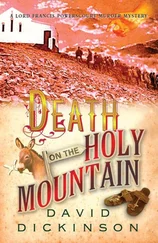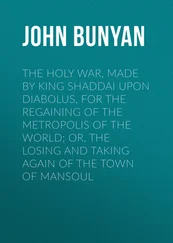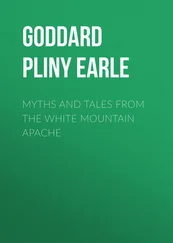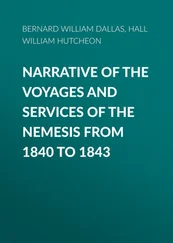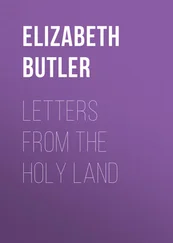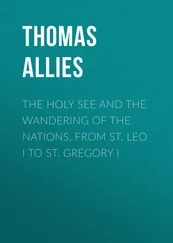By now some of the older boys had also begun to go up to the lecterns and were standing behind the monks, joining in with them. The chant rolled on, as deep and resonant as Gregorian plainsong, but with a more Oriental feel, the strangely elusive monodic modulations reverberating under the rolling Byzantine vaults.
Before long an unseen hand was pulling back the curtains from the sanctuary; a boy holding a smoking thurible rattled its chains. The entire congregation began a long series of prostrations: from their standing position, the worshippers fell to their knees, and lowered their heads to the ground so that all that could be seen from the rear of the church was a line of upturned bottoms. All that distinguished the worship from that which might have taken place in a mosque was that the worshippers crossed and recrossed themselves as they performed their prostrations. This was the way the early Christians prayed, and is exactly the form of worship described by Moschos in The Spiritual Meadow . In the sixth century, the Muslims appear to have derived their techniques of worship from existing Christian practice. Islam and the Eastern Christians have retained the original early Christian convention; it is the Western Christians who have broken with sacred tradition.
The white light of dawn was filtering in through the great splayed Byzantine windows in the south wall. Inside the church, the tempo of the chant was now sinking. The curtains closed; silence fell. A last eddy of prostration passed through the congregation. The Archbishop appeared and the boys queued to kiss his cross.
Slowly the church emptied; from outside you could hear the birds stirring in the vine trellising.
However alien and eccentric Eastern asceticism sometimes seems, it had an extraordinary influence on the medieval West; indeed the European monks of the early Middle Ages were merely provincial imitators of the Eastern desert fathers. The monastic ideal came out of Egypt, that of the stylite from Syria. Both forms travelled westwards, stylitism, amazingly enough, getting as far as Trier before being abandoned as impossible in a northern climate, with the aspiring German stylite eventually yielding to pressure from his bishop to come down before he froze to his pillar. It was as clear and unstoppable a one-way traffic, east to west, as the reverse cultural invasion of fast food and satellite television is today.
What has always fascinated me is the extent to which the austere desert fathers were the models and heroes of the Celtic monks on whose exploits I was brought up in Scotland. Like their Byzantine exemplars, the Celtic Culdees deliberately sought out the most wild and deserted places – the isolation of lonely bogs and forests, the bare crags and islands of the Atlantic coast – where they could find the solitude that they believed would lead them to God.
Moreover, despite the difficulties of travel, the links between the monastic world of the Levant and that which grew up in imitation of it in the north of Europe were unexpectedly close. Seventh-century Rome had four resident communities of Oriental monks and many Eastern church fathers travelled ‘beyond the Pillars of Hercules’ to the extreme west. Theodore, the seventh Archbishop of Canterbury, was a Byzantine from Tarsus who had studied at Antioch and visited Edessa; his surviving Biblical commentaries, written in England, show the extent to which he brought the teaching of the School of Antioch and an awareness of Syriac literature to the far shores of Anglo-Saxon Kent.
Many other more anonymous figures seem to have followed in his footsteps. The ‘seven monks of Egypt [who lived] in Disert Uilaig’ in the west of Ireland were proudly remembered in manuscripts of the Irish Litany of Saints, along with coracle-fulls of other nameless ‘Romani’ (i.e. Byzantines) and ‘the Cerrui from Armenia’. All these diverse figures seem to have found their way to the most extreme ends of the Celtic fringe, where they were revered for centuries to come: indeed so holy was the reputation of these travelling Byzantines that according to the Irish Litany of Saints even to read their names over a sick man was believed to prevent ‘boils, and jaundice and the plague and every other pestilence’.
If an intermittent flow of living monks from east to west was possible, then the flow of inanimate books was greater still. Up to the eighth century, The Life of St Antony of Egypt by Athanasius of Alexandria was probably the most read and imitated book in Europe after the Bible, and what was true of manuscripts in general was particularly true of manuscript illumination: that early Irish and Northumbrian gospel books took as their principal model work from the Byzantine east Mediterranean is now beyond question.
At Cambridge I spent my final year specialising in the study of Hiberno-Saxon art, and what above all pushed me on to try and get through to the Tur Abdin was the knowledge of the extent to which the early medieval art of Britain was indebted to the artists of the scriptoria of the monasteries there. For though these monasteries now lie forgotten and half-deserted in an obscure corner of a predominantly Muslim country, some scholars believe that work produced in the Tur Abdin may well once have provided the inspiration for the very first figurative Christian art in Britain.
As I lay on my hard monastic bed, unable to sleep, I turned over in my mind an art historical controversy I had once studied in some detail. The debate revolved around a most intriguing tale.
In the mid-sixteenth century Stephanos, the Catholicos of Armenia, prepared to make a journey which he hoped would change the history of the east Mediterranean. Finding his Patriarchal seat of Echmiadzin surrounded on the east by the resurgent Persian Empire, and on the west by the new Ottoman dynasty, he saw his people facing the same fate as had befallen the Byzantines a century earlier: conquest followed by a bitter subjection under the dusty sandal of Islam. Like the Byzantine Emperor Manuel II Palaeologus, the Patriarch saw only one hope for his people: that he should travel to Europe, somehow forge an alliance with the West, and so surround the Turkish armies in a Christian pincer movement.
Manuel had travelled to the West in vain: though he had acquiesced to many of the doctrinal demands of the Catholic Church at the Council of Florence, and had even been received with honour by King Henry IV of England at a grand banquet at Eltham on Christmas Day 1400, he came back to Constantinople empty-handed, without securing the dispatch of a single Western knight to defend the eastern frontiers of Christendom. Fifty years later, in 1453, his successor Constantine XI Paleologus died fighting on the walls of Byzantium as the Turks finally burst into what had once been the capital of the Christian world.
Catholicos Stephanos thought he could do better; and he hung his hopes on the support of the Pope, Paul III Farnese. Stephanos’s spies had told him that Pope Paul had made it his special pontifical objective to liberate the oppressed churches of the Orient. They also told him that the Pope had a special interest in the study of scripture, and that he had called a council of scholars to establish once and for all the authentic text of the Bible. Stephanos knew that if he was to succeed in his mission he would have to establish a personal rapport with the Pope, and for this reason he cast around for a suitable present for the Roman Pontiff. Eventually his advisers hit upon a brilliant idea.
Someone in Echmiadzin had heard that in the libraries of the monasteries of the Tur Abdin there lay an astonishing collection of early Christian gospel manuscripts. One of these was a copy of the Diatessaron , a very early and very unusual gospel harmony – the four canonical gospels united into a single life of Christ – originally composed by the priest Tatian in the early second century A.D. For a century or so the Diatessaron had been the standard New Testament text in use in the Church of Antioch, but as copies of the original gospels became more widely available, it slipped out of common use and eventually came to be seen as a heretical text. At some stage it seems to have been ordered that manuscripts of Tatian’s work were to be destroyed, and only in the obscure recesses of a few remote monastic libraries did copies of the Diatessaron survive.
Читать дальше

